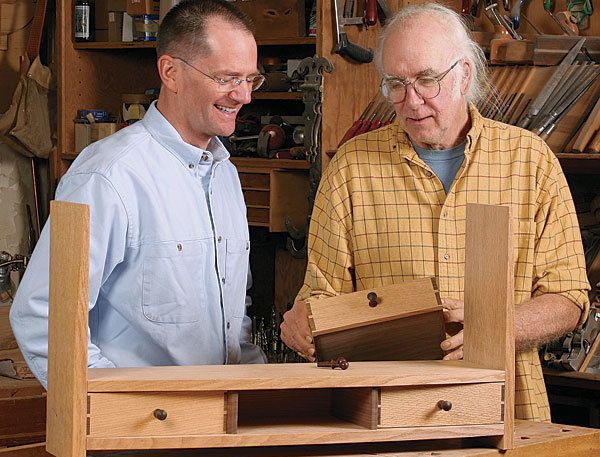A Visit to the Design Doctor
Hank Gilpin has the answers for 3 frustrated furniture makers
Synopsis: Three eager and thick-skinned woodworkers who wanted help with their designs. One gifted furniture designer. Put them together and you get a learning experience like no other. We helped three readers who wanted to step up their furniture designs get one-one-one critiques from designer Hank Gilpin. Listen in on what he told them, see his suggestions on improving their designs, and you’ll come away with ideas that will improve your designs, too.
There are two big challenges in furniture making: mastering the craft’s tools and techniques, and developing one’s sense of design. Many of us spend most, if not all, of our time tackling the first. That’s a shame, because all the technical skill in the world cannot save an unattractive piece of furniture.
That’s what led me to ask Hank Gilpin, an accomplished furniture designer and maker, to help some of our readers by critiquing furniture that they had built and drawing an improved version of each piece. He gladly agreed, and I posted a call for submissions on FineWoodworking.com looking for a few brave souls with interesting furniture and thick skins. In the end, Gilpin picked three pieces, made by Mike Flaim of Milford, Ohio; Stephen Harding of Newark, Del.; and Brian Havens of San Jose, Calif. Harding was close enough to drive up to Gilpin’s Rhode Island shop for a face-to-face session.
You might not envy these three. After all, many of us leave a part of ourselves in every piece we build, and criticism about something we have such a personal connection to can sting. But that’s not the way they see it. Harding was particularly pleased with the outcome of his day with Gilpin. As he listened to Gilpin’s advice, he began to understand how to free his sense of design, and says that he left energized, ready for his next project.
Consider every detail
According to Gilpin, Stephen Harding’s bookshelf with drawers is a case of unrealized potential. He liked the basic design but thought it fell down on its details. For example, Harding used quartersawn stock for the shelf and the lower rail. As a result, the front edges of these parts have unappealing plainsawn grain. Harding also made some missteps in construction. The grain on the walnut drawer dividers runs in the wrong direction, so their movement runs counter to the movement of the shelf and lower rail. After meeting with Gilpin, Harding said he learned two big lessons. First, Gilpin told him to draw more before he begins to build—up to 100 (!) sketches for every piece—as he considers and refines every detail, which is lesson No. 2.
From Fine Woodworking #214
For the full article, download the PDF below:
Fine Woodworking Recommended Products

Compass

Sketchup Class

Drafting Tools





















Log in or create an account to post a comment.
Sign up Log in